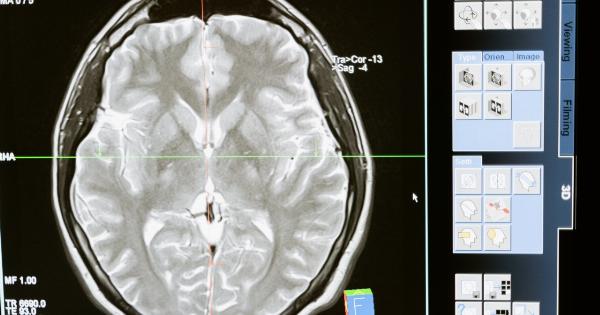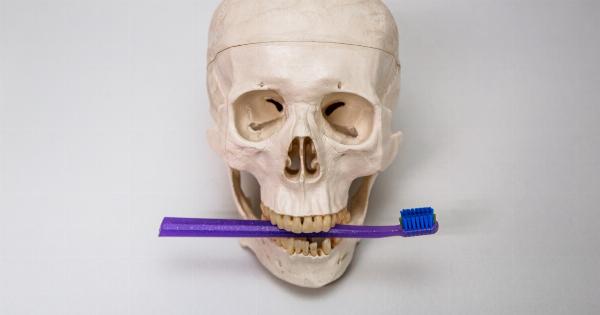Dementia is a medical condition characterized by the loss of cognitive function such as memory, thinking, and reasoning. It is a progressive disease with no cure, and it affects millions of people worldwide.
There are several factors that can increase the risk of developing dementia, including age, genetics, and lifestyle. However, recent studies have also shown that there is a link between bone health and dementia risk.
Bone mineral density and dementia risk
The first evidence of the relationship between bone health and dementia risk came from a study published in 2009. The researchers found that women with low bone mineral density (BMD) were more likely to develop dementia than those with normal BMD.
The study followed over 900 older women for an average of 4.5 years, and the results showed that women with the lowest BMD levels had a three times higher risk of dementia than those with normal BMD levels.
The reason behind this correlation is not fully understood, but it is believed that there are several factors involved.
One possible explanation is that bone loss and brain damage may share common mechanisms that affect both the skeletal and nervous systems. For example, the hormone estrogen plays an important role in maintaining bone density, but it also has neuroprotective effects on the brain. Therefore, the decline in estrogen levels during menopause may lead to both bone loss and cognitive decline.
Vitamin D and dementia risk
Vitamin D is a nutrient that is essential for bone health, as it helps the body absorb calcium from foods. However, it also has other important functions, such as regulating the immune system and reducing inflammation.
Several studies have suggested that low levels of vitamin D may increase the risk of various health problems, including dementia.
A study published in 2014 analyzed the association between vitamin D levels and cognitive function in over 1,500 older adults.
The results showed that participants with low vitamin D levels had a higher risk of developing dementia and Alzheimer’s disease than those with normal levels. Another study published in 2015 found that low vitamin D levels were associated with a faster cognitive decline in older adults.
The exact mechanism by which vitamin D affects the brain is still unclear, but it is thought that it may have neuroprotective effects by reducing inflammation and oxidative stress.
Moreover, vitamin D receptors have been found in various regions of the brain, including the hippocampus, which is involved in memory formation and consolidation.
Homocysteine and dementia risk
Homocysteine is an amino acid that is produced by the body during the metabolism of methionine, another amino acid.
High levels of homocysteine in the blood have been associated with various health problems, such as cardiovascular disease, stroke, and dementia.
A study published in 2002 followed over 1,000 older adults for five years and found that those with high homocysteine levels were more likely to develop dementia than those with normal levels.
The participants with the highest levels of homocysteine had a twofold increased risk of developing dementia compared to those with the lowest levels.
The mechanism by which homocysteine affects the brain is not fully understood, but it is believed that it may alter the structure and function of blood vessels, leading to reduced blood flow and oxygen supply to the brain.
Moreover, homocysteine can also increase oxidative stress and inflammation, which are both factors involved in the development of dementia.
Exercise and dementia risk
Regular physical exercise is beneficial for many aspects of health, including bone health, cardiovascular health, and cognitive function.
Several studies have shown that exercise can reduce the risk of dementia by improving brain plasticity, increasing neurotransmitter levels, and reducing inflammation.
A study published in 2014 analyzed the association between physical activity levels and cognitive function in over 1,500 older adults.
The results showed that participants who reported higher levels of physical activity had a lower risk of developing dementia than those who reported lower levels. Another study published in 2016 found that regular exercise was associated with a slower cognitive decline in older adults with mild cognitive impairment.
The exact type and duration of exercise required to reduce the risk of dementia is still unclear, but it is generally recommended to engage in at least 150 minutes of moderate-intensity exercise per week.
This can include activities such as brisk walking, cycling, swimming, or dancing.
Calcium and dementia risk
Calcium is a mineral that is essential for bone health, as it is a major component of bones and teeth. However, recent studies have suggested that high levels of calcium intake may increase the risk of various health problems, including dementia.
A study published in 2016 analyzed the association between calcium intake and cognitive function in over 700 older women.
The results showed that women who consumed the most calcium (>1,400 mg/day) had a higher risk of dementia than those who consumed the least (<600 mg/day). Another study published in 2017 found that the use of calcium supplements was associated with an increased risk of dementia in older women.
The exact mechanism by which high calcium intake may increase the risk of dementia is not fully understood, but it is thought that it may lead to the formation of calcium deposits in the brain, which can damage brain cells and impair cognitive function.
Conclusion
The relationship between bone health and dementia risk is complex and multifactorial. The evidence suggests that low bone mineral density, low vitamin D levels, high homocysteine levels, and high calcium intake may increase the risk of dementia.
On the other hand, regular physical exercise can significantly reduce the risk of cognitive decline and dementia. Therefore, it is important to maintain good bone health through a healthy lifestyle and regular exercise, which can also have beneficial effects on cognitive function.































